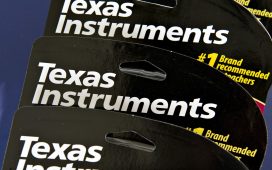Holger Scheibe | The Image Bank | Getty Images
A recession may be in the forecast for the U.S. economy, but the big question is when.
The Federal Reserve has said the banking crisis may prompt a mild recession later this year. On Wednesday, the central bank raised interest rates by 0.25 percentage point, while signaling it could end this cycle of increases.
The idea of a downturn likely is not a surprise to some Americans, 46% of whom said in January Morning Consult poll that the country is already in a recession. Another 25% said they expect a recession in the next year.
More recently, members of the National Association for Business Economics were evenly divided over whether a recession may happen in the next 12 months.
More from Personal Finance:
How the Fed’s latest rate hike affects your wallet
Americans are saving far less than normal
A recession may be coming — here’s how long it could last
A recession is typically defined as two consecutive quarters of negative gross domestic product growth. Consequently, a recession is not typically formally announced until after it has already set in.
While many are expecting a downturn, experts say it is not a foregone conclusion one will happen.
“I don’t think it’s predictable that we are going to end up in a recession,” said Brett House, professor of professional practice in economics at Columbia Business School.
A recession may not be a “necessary outcome,” House said, particularly as the economy has shown it is more resilient to interest rate increases than had been expected.

Interest rate increases are aimed at tamping down record high inflation.
The Federal Reserve’s goal is to get inflation down to 2%, as measured by the core personal consumption expenditures price index. The core PCE increased 4.6% over the past 12 months, according to the latest data for March.
“My belief is that we don’t get inflation down to 2% without a recession,” said Greg McBride, chief financial analyst at Bankrate.
As the economy fluctuates, experts say there are several key risk areas that consumers may want to keep an eye on.
Job loss may ‘push all the other dominoes down’
The unemployment rate dipped to record low of 3.5%, according to the most recent jobs report released in April.
However, new data shows job vacancies dropped to 9.59 million in March, the lowest level in almost two years. That still leaves about 1.6 open jobs to every available worker, which is “very good,” according to Andy Challenger, senior vice president at outplacement firm Challenger, Gray & Christmas.
Moreover, month-over-month wage gains are still taking place and quits rates are still pretty high as people still feel comfortable finding positions that are a better fit, he noted.
The labor market may never be this good again in our lifetimes. It’s never been before.
Andy Challenger
senior vice president at Challenger, Gray & Christmas
Even if the Fed achieves a perfect soft landing with the economy, it will still likely mean increased layoffs and fewer job opportunities, Challenger said. But for now, it’s still a pretty good time to be job searching, even though the market has cooled from six months ago, he said.
“The labor market may never be this good again in our lifetimes,” Challenger said. “It’s never been before.”
If the economy starts to slump, unemployment will likely go up, and that will affect other areas of household finances, McBride noted.
“When somebody loses a job, it tends to push all the other dominoes down,” McBride said.
Pricey car loan ‘quickly becomes untenable’
Auto loan delinquencies are already rising, particularly for borrowers with weaker credit profiles, McBride noted.
“If unemployment goes up, there will be a surge in auto loan defaults and repossessions,” McBride said.
Those payments can be large — with more new car buyers taking on loans topping $1,000 per month — and there’s little flexibility on those sums.
A big car payment “quickly becomes untenable in the face of a job loss or other income reduction,” McBride said.
Delinquency rates have trended higher this year, according to Cox Automotive. While loans that were behind 60 days or more fell in March for the first time in 11 months, they were still up 17.9% from the previous year.
The firm found 6.75% of subprime loans were severely delinquent. Even though that was down from 7.34% in February, it represents the highest March severe delinquency rate since 2006.
While this shows signs of stress, the potential negative impact on credit and the auto market is less severe than it was during the pandemic or great recession, said Jonathan Smoke, Cox Automotive chief economist, in a statement.
“We would obviously see more stress if the Fed pushes us into a recession,” Smoke said.
Credit cards: ‘Get ahead of that danger’
Credit card balances rose to $986 billion in the fourth quarter, according to the Federal Reserve Bank of New York, topping a $927 billion pre-pandemic high.
Rising interest rates have already made carrying outstanding credit card balances more expensive, according to a recent report from LendingTree.
In 2022, consumers paid $133.1 billion in credit card interest and fees, a 23.1% increase from the estimated $108.1 billion they paid in 2021.
Choochart Choochaikupt | Istock | Getty Images
In the fourth quarter, borrowers paid about $39 billion in credit card interest and fees, up 11.8% from the previous quarter.
As the economy shows signs of strain, borrowers may be more vulnerable to fall behind on credit cards, consumer loans or home equity lines of credit, now that they have higher interest rates attached to them, House noted.
“If people see themselves starting to carry a credit card balance where they didn’t before … they should get ahead of that danger and talk to their lender in advance,” House said. “Don’t wait until a missed payment happens.”
It’s much easier to work out with a lender before missing a payment rather than after, he said.











